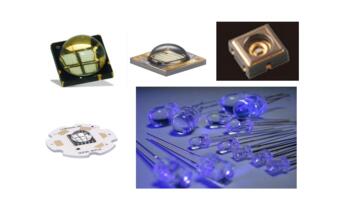Principle of UVLED sterilization
UVLED sterilization is through UVLED irradiation, using appropriate wavelength of UVLED can destroy the molecular structure of DNA (deoxyribonucleic acid) or RNA (ribonucleic acid) in microbial cells, resulting in growth cell death and (or) regenerative cell death, so as to achieve the effect of sterilization and disinfection. Generally, the effective wavelength range of traditional UVLED sterilization can be divided into four different bands: UVA (400315nm), UVB (315280nm), UVC (280200nm) and vacuum UVLED (200loonm). Because C-band UVLED is easy to be absorbed by the DNA of organism, especially the UVLED of 253.7nm is the best. UVLED is a kind of pure light source. The light emitted by UV LED germicidal lamp can be absorbed by organisms to achieve the best sterilization effect.

UVLED can kill microorganisms by radiation damage and destroy the function of nucleic acid, so as to achieve the purpose of disinfection. The effect of UVLED on nucleic acid can lead to the breaking of bonds and chains, crosslinking between strands and the formation of photochemical products, which changes the biological activity of DNA and makes the microorganism unable to replicate itself. This kind of UVLED damage is also lethal.
Zhang Hao: evaluation and application of UVA led photocatalysis technology for air sterilization and disinfection
Industry News · February 15, 2020 · 1811 views
High power, high light intensity! DUVTek over flow water sterilization uvc-led has been mass produced
Company News · May 17, 2021 · 605 views
Comparison of driving circuits for deep UV uvc-led
Technical Sharing · July 3, 2019 · 3196 views
Biological safety of 222 nm lamp for sterilization
Industry News · December 19, 2020 · 2463 views
Three questions lead you to understand the market of ultra violet uvc-led
Technical Sharing · October 20, 2018 · 973 views
Win win cooperation! Professor Ye Jichun and associate researcher Guo Wei of Ningbo Institute of materials, Chinese Academy of Sciences visited our company
Company News · July 31, 2018 · 1939 views
It does not destroy the nutrition and flavor. UVC ultraviolet is perfect for juice sterilization
Technical Sharing · November 3, 2018 · 1092 views
Double the luminous efficiency! New deep purple uvc-led to speed up and expand the market
Company News · March 19, 2021 · 427 views
